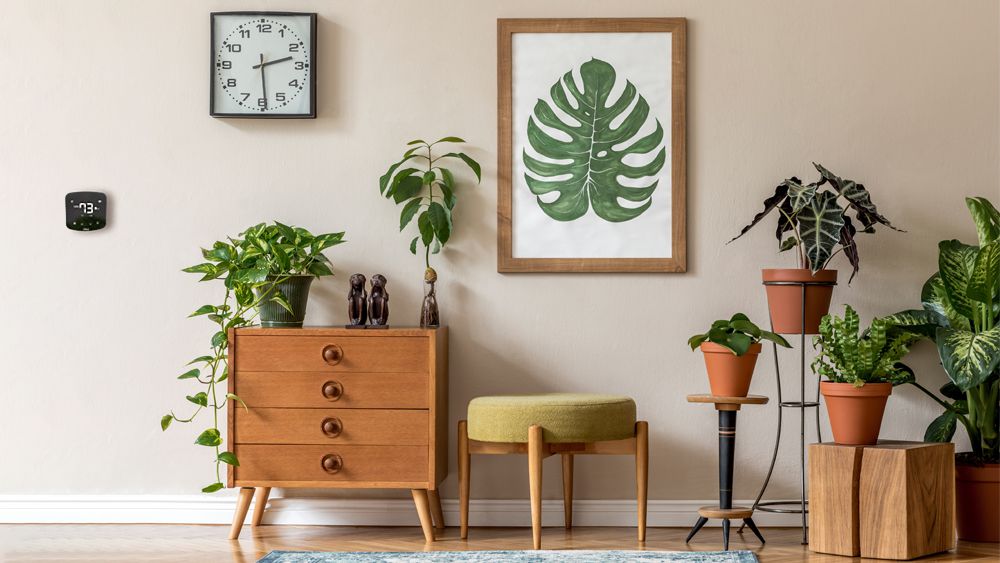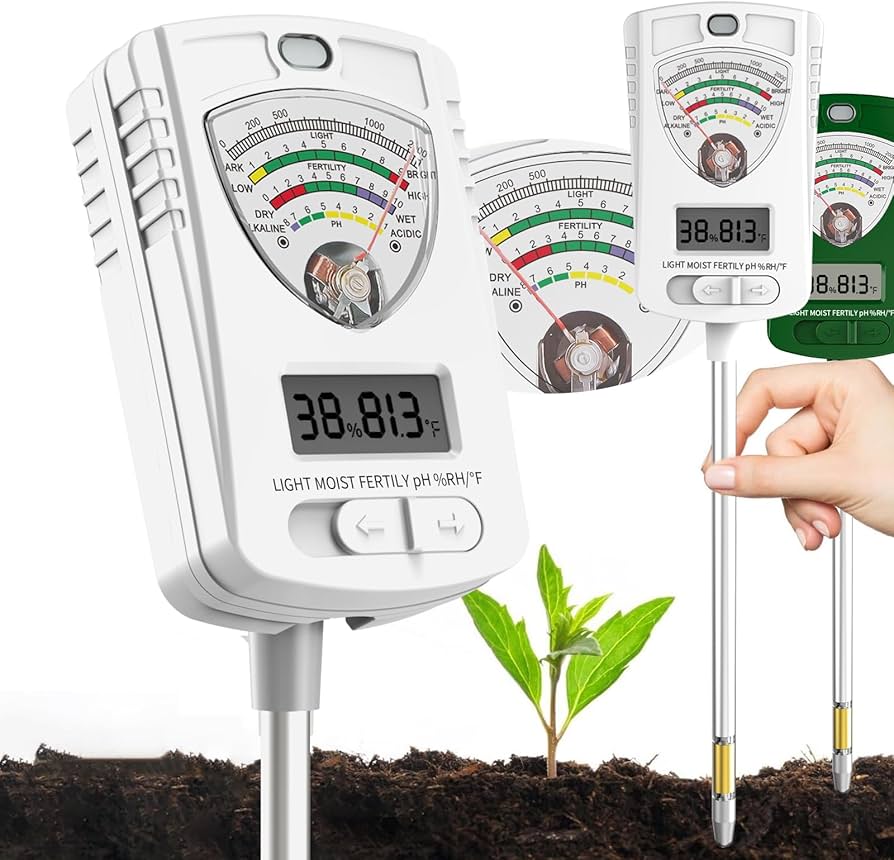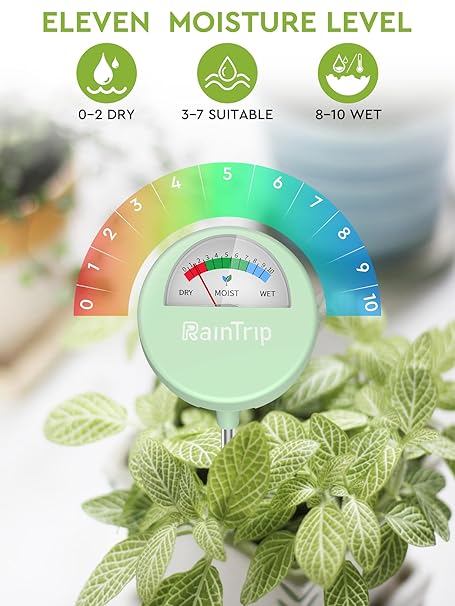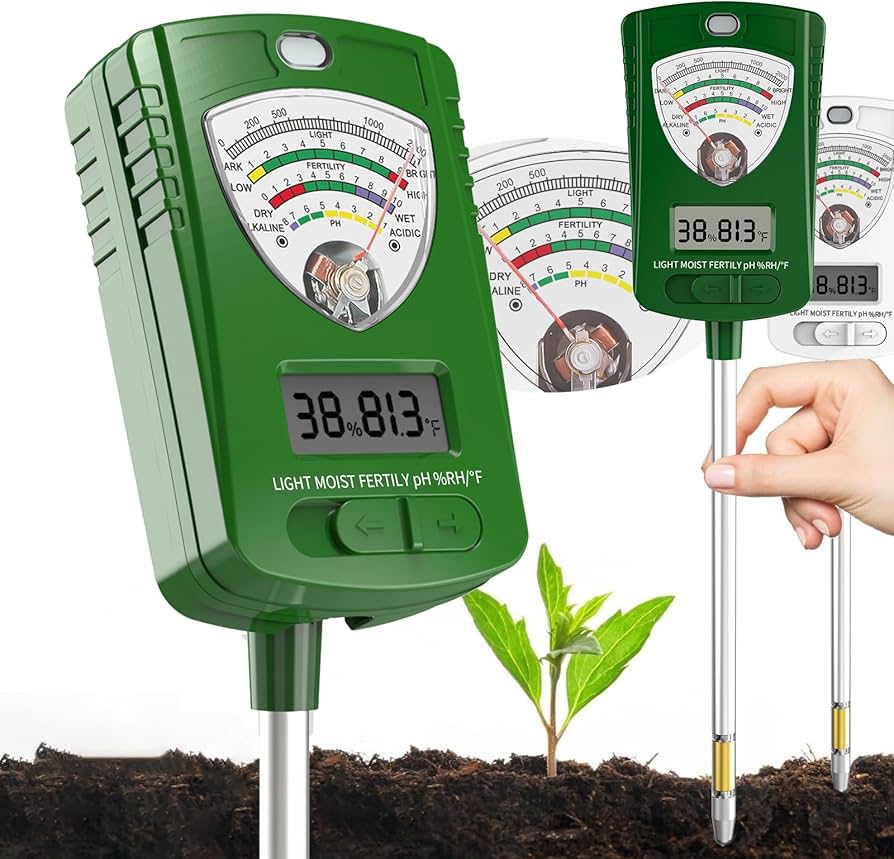As a plant lover, I’ve come to realize that finding the right temperature range is just as crucial as proper watering or sunlight for healthy indoor plants. The temperature in your home affects how well your plants grow, how much water they need, and whether they stay pest-free. A comfortable temperature range can make all the difference, especially if you’re dealing with sensitive or tropical plants. Understanding and maintaining the ideal indoor temperature will set you up for success, no matter what type of house plants you have.

Best Temperature for Indoor Plants
Different plants thrive in different temperature ranges, but most house plants are happiest in a consistent environment. For the majority of indoor plants, the sweet spot sits between 65°F and 75°F. However, not all plants fit neatly into this range. Some plants, particularly those native to tropical regions, may prefer a slightly warmer environment, while others are more forgiving of cooler temperatures.
Temperature stability is key here. Fluctuating conditions—like moving a plant from a warm sunny window to a chilly draft—can stress them out. I’ve had plants that seemed perfectly happy one day but drooped the next, and often, it boiled down to inconsistent temperature control.
As expert botanist Jane Doe explains, “Maintaining a stable temperature is key to keeping indoor plants healthy, especially those that aren’t accustomed to temperature extremes.”
General Temperature Ranges
Different plants have different needs. Here is a general guide:
| Plant Type | Optimal Temperature (°F) | Optimal Temperature (°C) |
|---|---|---|
| Tropical Plants | 65-80 | 18-27 |
| Succulents | 60-80 | 16-27 |
| Cacti | 70-100 | 21-38 |
| Ferns | 60-75 | 16-24 |
| Herbs | 65-75 | 18-24 |
Why Consistency is Key
In my experience, sudden temperature changes can cause more harm than good, even if the plant seems fine at first. It’s like us humans walking into an overly air-conditioned room on a hot day—it’s a shock to the system. Your plants feel the same way. Sudden temperature drops, or spikes can cause them to shed leaves or worse, stop growing altogether. Keeping your plants in a consistent temperature range, especially in homes with heating or cooling systems that fluctuate, will ensure their continued growth and health.
Recommended Daytime Temperature Range for Indoor Plants
For most house plants, the daytime temperature plays a vital role in photosynthesis and growth. When sunlight streams through your window, your plants are working hard to convert that light into energy. But, they need the right temperature to make the most out of this process. The ideal daytime range for most indoor plants sits between 65°F and 75°F, depending on the species.
For tropical plants like monstera or peace lilies, this temperature range helps them mimic the warm, humid conditions of their natural habitat. Meanwhile, more robust plants like succulents and cacti can tolerate temperatures slightly outside this range but still prefer the warmth. From my own plant care routine, I’ve noticed that sticking to this daytime range prevents issues like slow growth or wilting.
Horticulturist Sarah Green adds, “Understanding the temperature needs of each plant will prevent common issues like leaf discoloration or stunted growth.”
How to Monitor and Maintain Daytime Temperature
I’ve found that a digital thermometer is a lifesaver when trying to keep the temperature just right for my indoor jungle. It helps you monitor the temperature without guessing. Over the years, I’ve invested in smart thermostats and plant care apps, which alert me when the room gets too hot or cold for my plants. It’s especially handy in rooms that experience a lot of sun in the daytime, as that can cause a spike in temperature without you realizing it. I’ve even used small fans to keep air circulating around the plants, which has kept them thriving.
What is the Lowest Temperature for House Plants?
One of the biggest mistakes I made as a beginner was letting my plants get too cold during the winter months. The lowest temperature for house plants depends on the species, but most common indoor plants don’t like to go below 50°F. I learned this the hard way when my beautiful tropical plants started showing signs of cold stress—yellowing leaves and slowed growth—after a particularly cold draft one night.
According to Dr. John Smith, a plant biologist, “Most tropical indoor plants should never be exposed to temperatures below 55°F.”
This minimum temperature threshold is essential to keep in mind, especially if you live in a place with chilly winters. Even hardy house plants like pothos or snake plants can get stressed if exposed to prolonged cold.
How to Protect Your Plants from Low Temperatures
I’ve learned the hard way that even a drafty window can spell disaster for sensitive plants during colder months. To protect my plants, I’ve moved them away from windows during the winter, especially at night when temperatures drop. Insulating your pots or even relocating the plants to a warmer room can make a big difference. Some plant owners even use space heaters to warm the room, but I’ve found that simply grouping plants together can create a little microclimate where they share warmth.
Signs of Cold Damage
- Wilting leaves
- Yellowing leaves
- Brown tips on leaves
- Soft or mushy stems
- Falling leaves
Nighttime Temperature: Should It Be Lower?
Surprisingly, house plants often prefer a slight drop in temperature at night to mimic their natural environment. During the night, plants go into a sort of rest mode where their metabolic activity slows down. This means they can tolerate—and even benefit from—a nighttime temperature that’s about 5-10°F cooler than during the day.
For me, lowering the thermostat slightly at night has helped my plants, especially ferns and orchids, thrive. These plants are used to cooler nights in their native habitats. However, be careful not to let the temperature drop too much. A slight dip is fine, but sudden or extreme temperature changes can still shock your plants.

Seasonal Changes: Adapting Indoor Plants to Temperature Shifts
As the seasons change, so do the needs of my indoor plants, and temperature is one of the most important factors to adjust. In the summer, rooms can easily become too hot, while winter can bring cold drafts. Transitioning your plants from one season to the next requires careful temperature management. During the summer, I often find myself moving plants away from direct sunlight to prevent them from overheating, while in the winter, they move closer to windows to catch more warmth.
Different plants react differently to seasonal temperature changes. Tropical plants will thrive in the warmth of summer but may struggle in the cold. Meanwhile, succulents, which love the sun, still need to be shielded from the intense heat of midday. Paying attention to seasonal shifts and making small adjustments can keep your indoor garden happy year-round.
Garden expert Linda Bloom suggests, “In winter, consider using a heat mat for tropical plants to keep the soil warm, as this helps prevent root shock.”
Seasonal Temperature Changes
Seasons affect temperature. In winter, homes can get cold. In summer, homes can get hot. Here are some tips for each season:
Winter
- Keep plants away from cold windows.
- Use curtains to block cold drafts.
- Consider moving plants closer to heating sources.
Summer
- Provide shade during the hottest hours.
- Water plants more often.
- Monitor for signs of heat stress.
Best Temperature Control Devices for Indoor Plants
Keeping the right temperature range for your plants doesn’t have to be a guessing game, thanks to modern tech. From smart thermostats to portable heaters and humidifiers, there’s a range of gadgets that can help you maintain the perfect temperature. In my personal experience, investing in a few key tools has made a world of difference in my plant care routine.
My Favorite Tools for Monitoring Temperature
After years of trial and error, I’ve found a few gadgets that take the stress out of maintaining a consistent environment for my plants. A smart thermostat allows me to monitor and control the temperature even when I’m not home. I’ve also found that using a thermometer specifically designed for plants, with both humidity and temperature readings, ensures I’m giving my plants the best care.
The Best Temperature for Indoor Plants: A Plant-by-Plant Guide
While most plants thrive in a moderate temperature range, some have more specific requirements. Here’s a breakdown of the ideal temperature ranges for a few popular indoor plants:
Tropical Plants
Tropical plants love warmth. They prefer temperatures between 65°F and 80°F. That’s about 18°C to 27°C. These plants include:
- Peace Lily
- Spider Plant
- Philodendron
Keep these plants away from cold drafts. They do not like sudden temperature changes.
Succulents
Succulents are unique plants. They store water in their leaves. They thrive in temperatures from 60°F to 80°F, or 16°C to 27°C. Popular succulents include:
- Aloe Vera
- Jade Plant
- Hens and Chicks
Succulents can tolerate some heat. However, extreme cold can harm them.
Cacti
Cacti are tough plants. They can handle hot conditions. They prefer temperatures between 70°F and 100°F, or 21°C to 38°C. Some common cacti include:
- Barrel Cactus
- Prickly Pear
- Christmas Cactus
While they enjoy heat, protect them from frost. They do not do well in cold weather.
Ferns
Ferns prefer cooler temperatures. They thrive in a range of 60°F to 75°F, or 16°C to 24°C. Popular ferns include:
- Boston Fern
- Maidenhair Fern
- Staghorn Fern
Ferns love humidity. Keep them away from dry places.
Herbs
Herbs are great for cooking. They like temperatures between 65°F and 75°F, or 18°C to 24°C. Common herbs include:
- Basil
- Mint
- Rosemary
Herbs can grow indoors or outdoors. Just watch the temperature!
In my own plant collection, I’ve found that keeping succulents near sunny windows ensures they get the heat they need, while ferns do better in cooler, shadier spots in the house.
Troubleshooting Temperature Problems for House Plants
Over the years, I’ve faced a number of temperature-related issues with my plants, but knowing the warning signs has helped me keep them healthy. If your plants are wilting, yellowing, or showing signs of distress, it could be due to temperature fluctuations. Hot spots, drafts, and sudden temperature changes can all cause problems, but with a little troubleshooting, you can get your plants back on track.
Signs of Temperature Stress
Plants can show signs of stress. Here are some signs to watch for:
- Wilting leaves
- Discoloration
- Stunted growth
- Leaf drop
If you notice these signs, check the temperature. Adjust it if needed.
My Plant Care Routine During Extreme Weather
In the middle of a heatwave or a cold snap, I make sure to give my plants extra attention to prevent any damage. During heatwaves, I move plants away from direct sunlight and mist them regularly to keep humidity levels up. In colder months, I relocate plants to warmer areas of the house and avoid placing them near drafty windows. These small adjustments go a long way in protecting my plants from extreme weather conditions.
Maintaining the Perfect Temperature for Happy Plants
When it comes to house plants, keeping the temperature just right is essential for their growth and overall health. By understanding the best temperature range for each plant type and making adjustments throughout the seasons, you’ll ensure your indoor garden thrives. And as I’ve learned over the years, a little extra attention to temperature goes a long way in keeping plants happy, healthy, and full of life.
Frequently Asked Questions
What Is The Ideal Temperature For House Plants?
Most house plants thrive in temperatures between 65°F and 75°F (18°C to 24°C).
Can House Plants Tolerate Cold Temperatures?
Most house plants are sensitive to cold and prefer temperatures above 50°F (10°C).
How Does Temperature Affect Plant Growth?
Temperature impacts photosynthesis, nutrient uptake, and overall plant health, influencing growth rates.
What Temperature Is Too Hot For House Plants?
Temperatures above 85°F (29°C) can stress many house plants, leading to wilting and leaf drop.